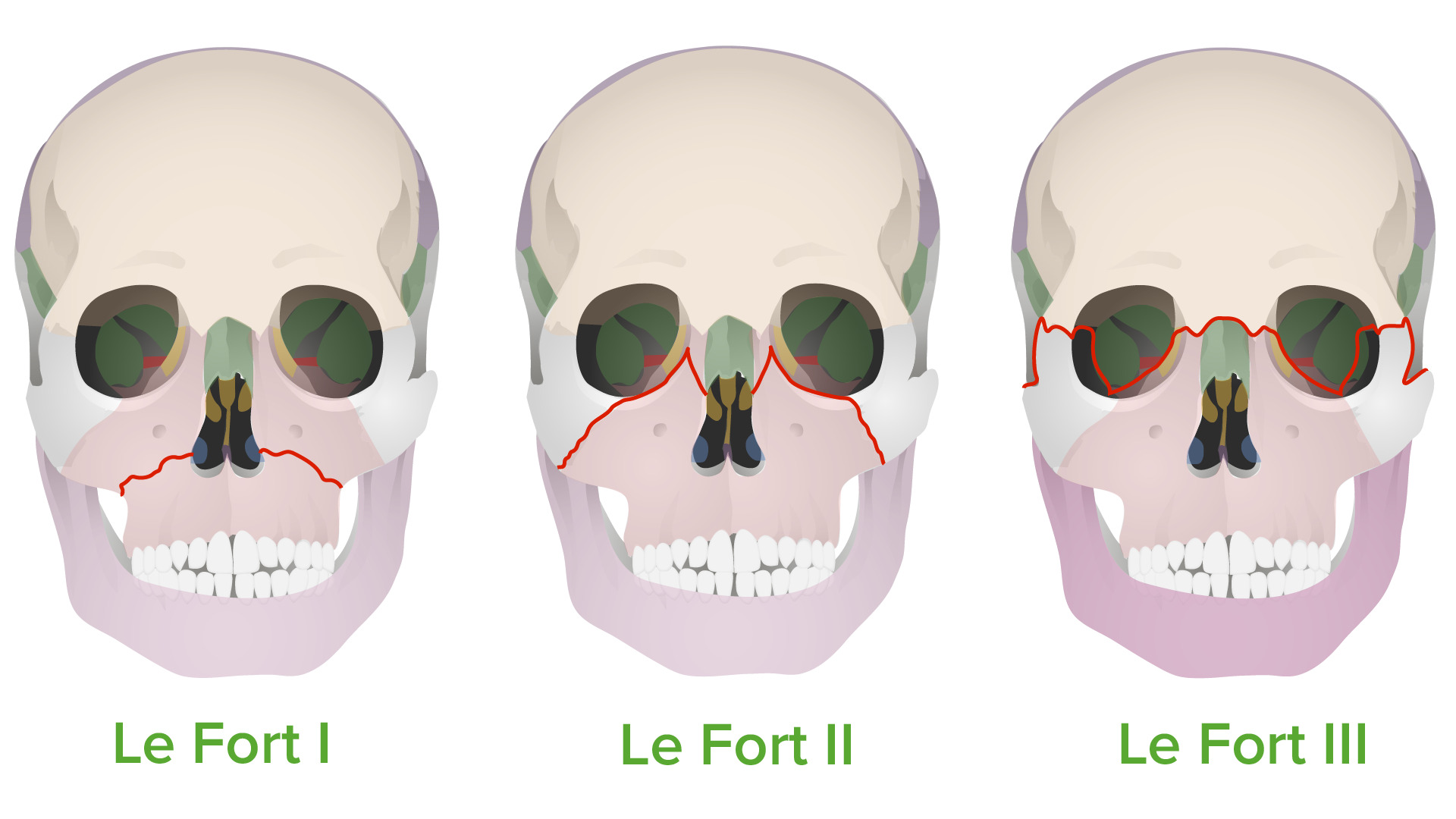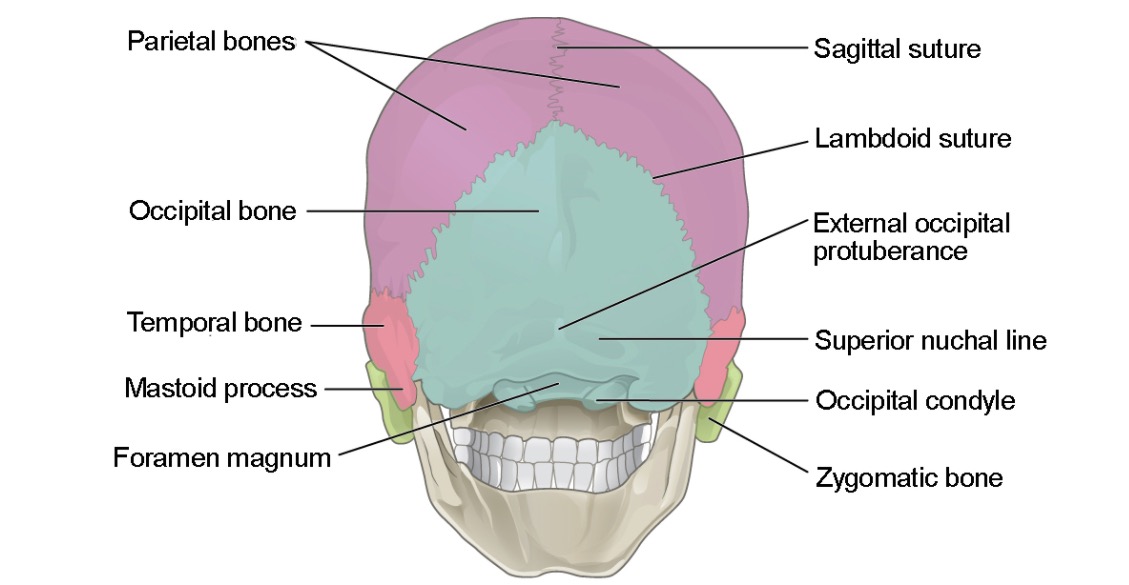Playlist
Show Playlist
Hide Playlist
Le Fort Fractures – Cranium (Skull)
-
Slides 23 Cranium HeadNeckAnatomy.pdf
-
Download Lecture Overview
00:01 Here, we’re looking at Le Fort fractures. These are midface fractures. There are three categories of Le Fort fractures. Collectively, these constitute about 20% of skull fractures overall. These are due to crash-type injures to the anterior skull. So we see Le Fort I. 00:32 Here, we see Le Fort II and then to our far right, we have Le Fort III. If we look at these individually, we’ll begin with type I. You can see where the red line is and this would represent the line of fracture in the mid-face. Some considerations here to keep in mind is that this fracture does lie superior to the maxillary alveolar processes. This would be where the maxillary teeth are found in the maxilla itself. So we’re looking at structures that would then span the nasal septum as you come across here, across the mid-face. Then, this type of Le Fort fracture may also involve the pterygoid plates that are features of the sphenoid bone. 01:33 Type II Le Fort fractures occur along the fracture line here shown in red. Structures that are along this fracture line would include the posterolateral parts of the maxillary sinuses would lie within this area here. Over on the opposite side, the infraorbital foramina are in this area of fracturing. Lastly, the lacrimal or ethmoid bones may be fractured along the fracture line of a type II. The third and final type of Le Fort fracture is simply identified as type III. This lies most superiorly with respect to the other two types, as we can see the fracture line coming across here. Horizontal fracture, upper midface, passes through, kind of hard to detect here but will pass through the superior orbital fissures, involves the ethmoid and nasal bones, hard to see the ethmoid involvement in this view but you can see involvement of the nasal bones. It would involve the greater wings of the sphenoid bone. 03:01 Then lastly, which we can appreciate, it would involve the frontozygomatic suture. 03:08 So that suture lies right in through here on this side and right in through the opposite side.
About the Lecture
The lecture Le Fort Fractures – Cranium (Skull) by Craig Canby, PhD is from the course Head and Neck Anatomy with Dr. Canby.
Included Quiz Questions
Which of the following correctly describes the location of Le Fort type 1 fractures?
- Superior to the maxillary alveolar processes
- Inferior to the maxillary alveolar processes
- Infraorbital foramina
- Anterolateral part of maxillary sinuses
- Posterolateral part of maxillary sinuses
Which of the following statements regarding Le Fort fractures is incorrect?
- Type 3 Le Fort fractures lie most inferiorly to the other Le Fort fractures.
- Type 2 Le Fort fractures may involve lacrimal or ethmoid bone.
- Type 1 Le Fort fractures may involve pterygoid plates of the sphenoid bone.
- Le Fort fractures result from crush-type injuries.
- Le Fort fractures constitute 20% of total skull fractures.
Customer reviews
2,8 of 5 stars
| 5 Stars |
|
2 |
| 4 Stars |
|
0 |
| 3 Stars |
|
0 |
| 2 Stars |
|
1 |
| 1 Star |
|
2 |
it was great.the pacing of the lecturer was okay it gives me time to imagine the structures since this is anatomy (pure memorization).Thank you
I personally didn't found these lectures much informative, the speed of the professor is extremely slow plus the slides provided in it has more than 55 pages lot of times for a single lecture instead of compiling it in a good way. Must work with the slides provided in the download items. The lecture would be useful if it would have engaged the whole thing clinically like which le forte fracture will be associated with rhinorrhea, etc.
great job, thank you for the details! if there are updates, it is much appreciated
I have watched the lecture series on the Abdominal wall and Thoracic viscera conducted by professor Craig, and he was more interactive and seemed to have greater Knowledge in those parts. This lecture is way too general and lacks many important info.






